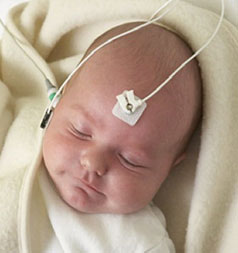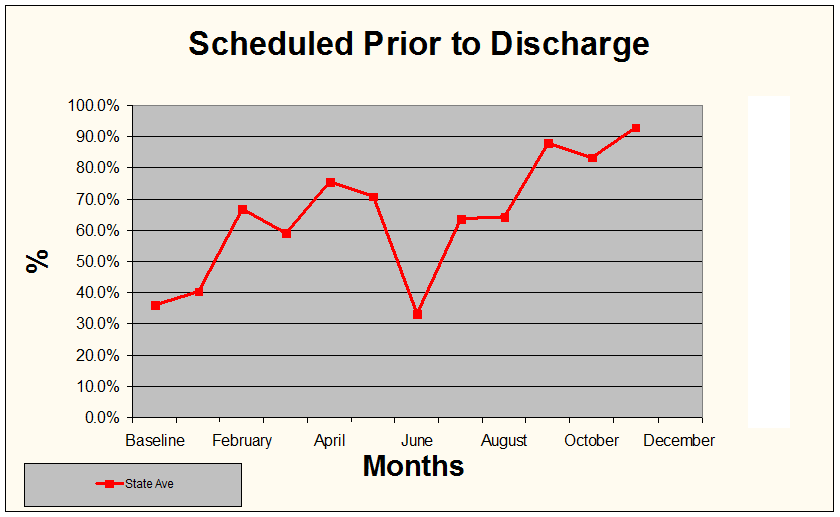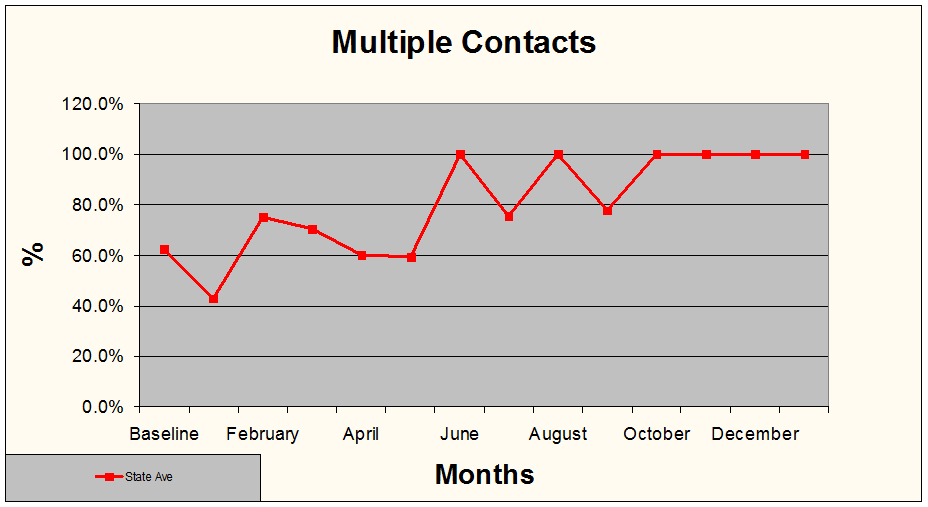Introduction
Closing the Follow-up Gap: An EHDI Case Study
The Visit to the Outpatient Clinic
The Xiong family arrive at Prairie View Pediatric Audiology Clinic with their one-month-old son Jon. Jon was born at a hospital just a few miles away. The audiologist is prepared for the Xiong visit because she was alerted to the family’s referral through the WE-TRAC system. WE-TRAC indicated that this baby was screened using ABR technology at the hospital and his right ear did not pass. The audiologist also noticed in WE-TRAC child’s chart that the family required a Hmong interpreter and has one available for today’s appointment.
After welcoming the Xiong family back to her office, the audiologist begins the screening appointment by conducting an ABR screen in each ear. This time the child refers on the left ear rather than the right ear as reported by the hospital. The audiologist continues the screening appointment by conducting OAE’s, which are present bilaterally. The results verify that this child will require a full audiologic evaluation.
The results and need for a follow-up evaluation are conveyed verbally through the translator to the family. The family is very disappointed and expected they would have a conclusive diagnosis after today’s visit. The audiologist apologizes but encourages them to make the follow-up appointment at the reception desk on the way out. The family shares that they will be moving to live with family in the western part of the state in the coming week. Undeterred, the audiologist searches the Find Wisconsin Providers directory on the improveehdi.org website and locates an audiologist who can perform sedated ABR evaluation. The family provides the clinic contact information to the receptionist who schedules a diagnostic evaluation appointment at Western Region Audiology Clinic.

Standardize communications (written and verbal) with parents about hearing screening results
Provide clear communication about next steps using the EHDI Care Map
Identify two points of contact for families of infants who did not pass such as a relative or friend
Schedule the follow-up appointment during the visit
Record the results accurately in the state EHDI data system (WE-TRAC)
Discussion Points
- What additional improvement strategies could the outpatient facility have used that would help the family follow-up?
- Why is rescreening both ears important?
- The baby was screened with ABR equipment as an inpatient. How does this impact the outpatient rescreening process?
- How did the communication practices of this clinic assist of fail to assist the family better for the next step in the process?
- How could the GBYS program have been utilized in this scenario? What would the benefit have been? Who might have benefited?
- How could this clinic have prepared the family better for the next step in the process?
- How do you predict that the time between the visit and follow-up care could impact this family’s EHDI experience?
- How do you predict that the time between this visit and follow-up-care could impact this family’s EHDI experience?
- If this family’s follow-up visit had gone exactly as it should have, what would have been different?
Best Practices Guidelines

“The biggest struggle we had was the way we were delivered the news from the outpatient screening. It was just so matter-of-fact. Without any comfort, warning or preparation.”
Policies and Procedures
Out of Hospital Births
WE-TRAC
Tools for Improvement

“As nurses, we are rarely called upon to deliver test results. Our job is to comfort and care for our patients. That is why I feel like we often over-soften the news when a child doesn’t pass the hearing screening. We need more training on how to effectively deliver the information without needlessly terrifying families.”
-Anonymous Nurse, QI Session Feedback Form
Outpatient Tools for Improvement
Assure Change is an Improvement
Schedule audiology appointment prior to discharge

Collect or verify two points of contact for the family

Improvement In Action
Robert Gretzlock: A Father’s Persepective on the Challenges and Benefits of EHDI (02:50)
An interview with Rob Gretzlock (text version)